
Josefa Acevedo Gomez
*Nació en Bogotá el 23 enero de 1803. Se destacó como escritora de costumbres; sus obras tienen fuerte inclinación hacia un sentido moral. Era hija de José Acevedo y Gómez, prócer de la independencia conocido como el "Tribuno del pueblo". Josefa Acevedo descendía de familias de fortuna e importancia local, con antepasados conquistadores, encomenderos y funcionarios del gobierno colonial. Circunstancias relacionadas con las guerras de Independencia y las incertidumbres políticas propias de esos años afectaron la vida de la escritora y de sus compañeros de generación, circunstancias que usaron como temas para sus obras.
La educación de su madre, de cultura y conocimientos superiores a los de las mujeres de la época, influyó para que los miembros de la familia Acevedo Tejada alternaran su participación en la vida política y militar de la República con su interés por la ciencia y las artes. Ello contribuye a explicar por qué Josefa Acevedo fue la primera mujer escritora de la época republicana; la que rompió el prolongado silencio femenino que duraba desde el período colonial, durante el cual sólo una voz, la de la madre Francisca Josefa de Castillo tuvo eco en la literatura nacional. Josefa Acevedo también fue la primera escritora civil de nuestra historia. Por ello, la temática de su obra, en contraste con el misticismo de la madre Francisca Josefa y de otras religiosas, está referida, dentro de las tendencias de la época, al amor filial, al amor romántico, a la moral social, la historia y las costumbres nacionales.
Josefa Acevedo escribió también varias biografías breves: la de su padre, calificada como una de las piezas ejemplares del género en Colombia; la de su hermano José Acevedo; la del doctor Vicente Azuero; la de su primo hermano, el escritor Luis Vargas Tejada; y una autobiografía redactada poco antes de su muerte, en la cual se refiere a varios manuscritos inéditos, entre ellos "muchos romances y un drama" que, según informa su nieto Adolfo León Gómez, no se hallaron dentro de sus papeles. Finalmente, Cuadros de la vida privada de algunos granadinos copiados al natural para instrucción y divertimento de los curiosos fue publicado después de su muerte, con un prólogo biográfico de José María Vergara y Vergara, y contiene, según los críticos, lo mejor de su obra en prosa. Su nombre se sostiene en la calidad de unos pocos textos y en su real vocación de escritora. Obtuvo un lugar destacado en la historia de las letras colombianas que, según Rafael Pombo, comparte con Silveria Espinosa de Rendón y con Soledad Acosta de Samper.
Josefa Acevedo de Gómez murió en Pasca, el 19 de enero de 1861.
Taken from epigraph:
http://www.epigrafe.com/resena/autresena.asp?aut_id=13
===================================================================
German Arciniegas
German Arciniegas (Born December 6, 1900 in Bogota, died November 29, 1999) was a Colombian essayist and historian. Arciniegas wrote over 50 books and many columns in the Colombian newspaper El Tiempo and also taught at Columbia University in New York.
Books
* El estudiante de la mesa redonda, Madrid: Juan Pueyo, 1932. 248 pp. (the student of the round table)
* "America tierra firme", Sociologia. Santiago de Chile: Ercilla, 1937. 235 pp. (America firm land)
* "Los Comuneros, Bogota: Editorial ABC, 1938. 402 pp. (the commoners)
* "Biografia del Caribe",Buenos Aires: Editorial Sudamericana, 1945. 531 pp. (Biography of the Caribbean)
* "Entre la libertad y el miedo", Mexico: Editorial Cultura (Cuadernos Americanos), 1952. 362 pp. (Between Freedom and being afraid)
* "America magica - Los hombres y los meses", Buenos Aires: Editorial Sudamericana, 1959. 317 pp. (magic America - men and months)
* "America magica - Las mujeres y las horas", Buenos Aires: Editorial Sudamericana, 1961. 253 pp. (magic America - women and hours)
* "El mundo de la bella Simonetta, Buenos Aires: Editorial Sudamericana, 1962. 185 pp. (The world of beauty Simonetta)
* "El continente de los siete colores. Historia de la cultura en America Latina, Buenos Aires: (The seven colors' continent) Editorial Sudamericana, 1965. 715 pp.
* "Nueva imagen del Caribe", Buenos Aires: Editorial Sudamericana, 1970. 457 pp. (new image of the Caribbean)
* "Roma secretisima", Madrid: Anaya, 1972. 194 pp (Very secret Roma)
* "Bolivar, el hombre de la gloria, Bogota: Ediciones Tercer Mundo, 1983. 142 pp. (Bolivar, the man of the glory)
===========================================================================
Hernando Urriago Benitez
Hernando Urriago Benitez is a poet and essay writer who was born in Cali, Colombia in 1974. He studied literature in Universidad del Valle and a Magister in Colombian and Latin American literature. His grading thesis was about essay writer Baldomero Sanin Cano. Urriago Benitez won the National Poetry Prize in 1999 and published his book Esplendor de la Ceniza (Cinder's splendor) in 2003. In 2006, he published his first essay book, Caligrafias del Asombro. His second book, El Signo del Centauro (The sign of the cenaur), was published in 2007. He currently works in Universidad del Valle with other writers like Carlos Patino Millan, Fabio Martinez and Oscar Perdomo Gamboa.
======================================
============================================================================

Miguel Ángel Osorio Benítez
(July 29, 1883 – January 14, 1942), better known by his pseudonym, Porfirio Barba-Jacob, was a Colombian poet and writer.
Born in Santa Rosa de Osos, Antioquia, to parents Antonio María Osorio and Pastora Benítez, he was raised up by his grandparents in Angostura. In 1895 he started a journey, first through Colombia, and after 1907 to Central America and the US, which ended in 1930 when he settled down in Mexico City.
Towards 1902 he founded, in Bogotá, the literary magazine "El cancionero antioqueño" (The Antioquian songbook), which he managed under the pseudonym Marín Jiménez. Short after this foundation, he wrote the novel "Virginia", which was never published because the original manuscript was confiscated by the mayor of Santa Rosa for alleged immorality.
In 1906 he moved to Barranquilla where he adopted the pseudonym Ricardo Arenales. This pseudonym would last until 1922, when in Guatemala he changed it to the pseudonym which he would use for the rest of his life: Porfirio Barba-Jacob. Towards 1907, still in Barranquilla, he wrote his first poems, such as "Árbol viejo", "Campiña florida", and his most famous work - "Parábola de la vida profunda" (Parable of the deep life).
In his journey through Central America, Mexico and the US, he contributed to many magazines and journals. He befriended Porfirio Díaz, so he had to flee to Guatemala, from where he fled again, this time to Cuba, for disagreeing with Manuel Estrada.
In 1918 he returned to Mexico, where it is said that he wrote a biography of Pancho Villa. In 1922 he was expelled by Álvaro Obregón and fled again to Guatemala, from where he was again expelled in 1924 by Jorge Ubico. Barba-Jacob then went to El Salvador, and after being deported by Alfonso Quiñones, he had to travel to Honduras, New Orleans and Cuba. In 1927 he went back to Colombia; after some recitals and contributions to the Colombian journal El Espectador, he left Colombia on what would be his last trip.
He died in 1942 of tuberculosis in Mexico City. Four years after his death, on January 11, 1946, his ashes were claimed by the Colombian government, and were given back in the Rotonda de los Hombres Ilustres.
============================================================================
Ismael Camacho Arango

Doctor Ismael camacho Arango was born in Lebrija, Colombia in 1926. He got his degree of medicine in the universidad nacional de Bogota in 1952.
His literary career started when he won a short story competition in 1967. He wrote his book siete minutos in 1971.
The novel is a future vision of our industrialist society and of the citizens who only think of having money. The day will come when people will only worry about themselves.
Laugh and cry with the characters and adventures the author describes in this book full of morbid humour, where he was the master.
Dr. Ismael Camacho died in Palmira, Colombia in 1995.
==========================================================

Gustavo Bolivar
Gustavo Bolivar Moreno is a Colombian author, screenwriter and journalist. He is best known for the best-seller Sin Tetas No Hay Paraiso, which means in Spanish: Without Breasts There Is No Paradise becoming a hit TV series in some parts of South America, with English and Spanish versions in development for United States audiences.
Spinoffs
* Without Breasts There Is No Paradise (NBC Series)
* Sin Tetas No Hay Paraíso (Colombian series)
* Sin Tetas No Hay Paraíso (Telemundo series)
==================================================================================
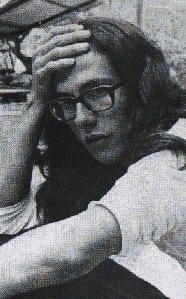
Andrés Caicedo
Luis Andrés Caicedo Estela (September 29, 1951 – March 4, 1977) was a Colombian writer born in Cali, the city in which he spent most of his short life.
In 1964, when he entered third grade, he wrote his first story - "El Silencio" (The Silence). From this moment on, Caicedo wrote several short stories and theatre plays, and started his first novel.
In 1973 Caicedo travelled to the US, and started what is often taken to be his best novel - ¡Que viva la música!. In 1974, he wrote the short story Maternidad, which he himself considered his masterpiece. In the same year, Caicedo published the first edition of the magazine "Ojo al cine" (Eye on cinema). In 1975 the final version of ¡Que viva la música! was ready, and Caicedo gave it out to Colcultura to publish it.
In 1976, the publishing house Crisis, of Buenos Aires, bought the printing rights of ¡Que viva la música!. In this same year Caicedo attempted suicide for the first time. Finally, at the age of 25, Andrés Caicedo died of a deliberate drug overdose; he said "life is not worthwhile after 25 years". Closer to his death he was trying to finish his most ambitious project, Noche sin fortuna, this teen-angst ridden novel with gothic overtunes itended to be an unifying tale for most of his previous characters.
His works reflect the violence and the huge problems of the teenagers living in a big city like his native Cali, like drugs, alcohol, and insanity. Despite his early death, he left a lasting legacy to the Colombian literature that can be seen in the works of authors such as Rafael Chaparro, Efraim Medina Reyes, Manuel Giraldo, Octavio Escobar and Ricardo Abdahllah.
Main Works
* "Angelitos empantanados"
* "¡Que viva la música!"
* "Noche sin fortuna"
* "El atravesado"
* "Los dientes de caperucita"
* "Calibanismo"
===========================================================================
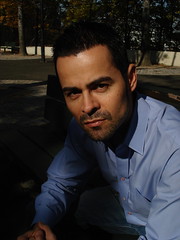
* James Cañón
James Cañón (1968 - ) is a Colombian-American novelist.
Born and raised in Ibagué, Colombia, Cañón moved to New York in the mid 1990s to study English. His first novel, Tales from the Town of Widows (ISBN 0061140384), was originally written in English, Cañón's second language, and published in New York by Harper Collins in January of 2007. The novel, which narrates the story of a Colombian village where the men have been forcibly "recruited" by communist guerrillas and taken away to fight for their cause, has been translated into six languages and published in thirteen countries. His short stories have been anthologized in Bésame Mucho, (NY: Painted Leaf Press, 1999), and Virgins, Guerrillas & Locas, (SF: Cleis Press, 2000). Cañón holds an MFA in creative writing from Columbia University. He lives in New York.
==========================================================================

José Manuel Marroquín
Jose Manuel Marroquin (Bogotá, August 6, 1827 - September 19, 1908), Colombian political figure and writer.
He started studying literature and philosophy at the age of five. He went on to study jurisprudence at the College of San Bartolomé. Co-founder of Academia Colombiana de la Lengua with Miguel Antonio Caro and José María Vergara, he was first vice-president of the Republic of Colombia in 1898 and elected president thereafter by 1900 and re-elected in 1904.
Apart from his political involvement, he was a writer, having published many books and collection of poems in Spanish.
References
* APUNTES AUTOBIOGRÁFICOS, La Biblioteca Luis Ángel Arango, el Museo del Oro, accessed October 3, 2006.
=================================================================
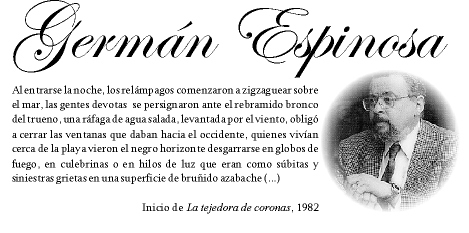
Germán Espinosa
Germán Espinosa (April 30, 1938 – October 17, 2007) was a Colombian novelist, poet and author born and based in Cartagena, Colombia.[1] He wrote over forty works over the course of his career. He often used his native Cartagena for the backdrop or inspiration for his writings.[1] His historical fiction writings featured such diverse topics as witches, pirates and the Spanish Inquisition.[1]
Espinosa was often called "Gabo sin Nobel," or "Garcia Marquez without the prize" in English.[1] The quote referred to fellow Colombian writer, Garcia Marquez, who won the Nobel Prize for Literature in 1982.[1]
Espinosa was best know for his 1982 novel "La Tejedora de Coronas" (The Weaver of Crowns).[1] which focuses on the main character, Genoveva Alcocer, and is set in 17th Century Cartagena.[1]
Espinosa once called the city of Cartagena a "city of legends."[1] "Perhaps the legends that arose in my city were the product of the inactivity of the people, since, for so long, almost the entire 19th century . . . there was nothing much to do other than invent, speak, read and remember."[1]
Germán Espinosa died of cancer on October 17, 2007, in Cartagena at the age of 69.
===========================================================================

Gabriel García Márquez
Gabriel José de la Concordia García Márquez, also known as Gabo (born March 6, 1927[1] in Aracataca, Colombia) is a Colombian novelist, journalist, editor, publisher, political activist, and recipient of the 1982 Nobel Prize in Literature. García Márquez has lived mostly in Mexico and Europe and currently spends much of his time in Mexico City. Widely credited with introducing the global public to magical realism, he has secured both significant critical acclaim and widespread commercial success. Many people hold that García Márquez ranks alongside his co-writers of the Latin American Boom, Jorge Luis Borges, Alejo Carpentier, Miguel Angel Asturias, Carlos Fuentes, Mario Vargas Llosa and Julio Cortázar as one of the world's greatest 20th-century authors.
Gabriel García Márquez is the father of television and film director Rodrigo Garcia.
===========================================================================
Alfredo Iriarte
Alfredo Iriarte (1932-2002) was a Colombian historian and writer, author of many short historical and fiction novels and essays. Among his books can be mentioned "Lo que lengua mortal decir no pudo" (1979), "Bestiario tropical" (1986), “Episodios Bogotanos” (1987), “Espárragos para dos leones”, “Batallas y batallitas en la historia de Colombia” (1993), “Abominaciones y denuestos” (1994), “Muertes Legendarias” (1996), and “El jinete de Bucentauro” (2000), his last novel.
Besides of his books, Iriarte also made valuable contributions to the correctness and well idiomatic use of the Spanish language in his newspaper column “Rosario de perlas”, published periodically in the Colombian diary El Tiempo for more than 25 years. He was also a frequent commentator of historical and literary ephemeredes in the local cultural radio station HJCK.
For his profound knowledge of the Spanish and the prolific use of uncommon terms within a particularly rhythmic, hilarious and delightful grammatical correction (what makes his books hard to translate), he was recognized as one of the best exponents of an almost vanished and unique vice royal Bogotan heritage (usually known as “cachaca” society), proud of erudite literacy and gentle lifestyle, proper only of the old fashioned and well educated Bogotan society of the late part of the 19th and first half of the 20th century.
===========================================================================

Jorge Isaacs
Jorge Isaacs Ferrer (1 April 1837–April 17, 1895) was a Colombian writer, politician and soldier. His only novel, María, became one of the most notable works of the Romantic movement in Spanish literature.
His father was George Henry Isaacs, an English Jew originally from Jamaica. He first settled in Chocó, Colombia, where he made a fortune from gold mining and trade with Jamaica. He then moved to Cali where he converted to Christianity, obtained Colombian citizenship and married Manuela Ferrer Scarpetta, daughter of a Spanish Navy officer. He also owned two haciendas near Cali, called "La Manuelita" and "El Paraíso" the latter would provide the setting for María. "El Paraiso" has been preserved as a museum, with emphasis upon its relation to the novel.
Jorge Isaacs was born in Cali in 1837. Little is known about his childhood, but in some of his poems Isaacs portrays the Valley of the Cauca as an idyllic place where he spent his most of it. He was first educated in Cali, then in Popayán and, finally, in Bogotá between 1848 and 1852.
Isaacs returned to Cali in 1852 without finishing his baccalaureate studies. In 1854 he fought for seven months in the Cauca Campaign against the dictatorship of General José María Melo. In 1856 Isaacs married Felisa González Umaña, who was fourteen years-old at the time and with whom he had many children.
During the time of the civil wars his family went through a period of economic hardship. Isaacs tried unsuccessfully to become a merchant as his father. He then turned to literature and wrote his first poems between 1859 and 1860. During that time he also wrote several dramas of historical theme. Isaacs took arms again in 1860, this time against General Tomás Cipriano de Mosquera, and saw action in the Battle of Manizales during the Colombian Civil War (1860-1862). In 1861 Isaacs' father died; when the war ended Isaacs returned to Cali to take over the administration of his father's businesses, but he found them deeply in debt. This forced him to sell two of his father's haciendas "La Rita" and "La Manuelita".
Isaacs' economic hardship took him back to Bogotá, where he found that his literary efforts were being well received. The members of the rea der's club "El Mosaico" offered to publish his poems after Isaacs read them in one of their sessions. This compilation was published under the name Poesías in 1864. That year Isaacs took a job as the supervisor of the construction of a horse-path between Buenaventura and Cali and started to write María. Around that time he also fell ill with malaria.
When María was published in 1867 it became an immediate success both in Colombia and in other Latin American countries. As a consequence Isaacs became a well-known personality in Colombia and his newly-found fame allowed him to start a career as journalist and politician. As a journalist he directed the newspaper La República, of moderate conservative tendencies, in which he also published some articles. As a politician he first joined the Conservative Party, but later switched to the Radical Party. In 1870 he was sent to Chile as consul general.
On his return to Colombia he was actively involved in the politics of Valle del Cauca, which he represented in the Colombian Congress, and in 1876 he fought in yet another civil war. However his political career ended in 1879 after an incident where he proclaimed himself political and military leader of Antioquia in response to a conservative revolt.
After his retirement from politics Isaacs published in 1881 the first canto of the poem Saulo, although he was never able to complete it. He also explored the Magdalena Department, in the north of Colombia, where he found important coal and oil deposits. Isaacs spent the last years of his life in the city of Ibagué in Tolima where was planning to write a historical novel. He died of malaria on April 17, 1895.
==========================================================

Álvaro Mutis
Álvaro Mutis Jaramillo (born August 25, 1923) is a Colombian poet, novelist, and essayist.[1] Before returning to Colombia in his adolescence, he lived in Brussels, where his father held a post as a diplomat. He has lived in Mexico City since 1956.
Though critically acclaimed worldwide, his works are most widely read in Latin America and Europe, and have been translated into many languages. He is best known for his novellas featuring Maqroll el Gaviero (Maqroll the Lookout), a wandering sailor and adventurer. These have been gathered into a compendium, The Adventures and Misadventures of Maqroll (ISBN 0940322919, translated into English by Edith Grossman). Typical praise by Mutis' contemporaries includes: "An amazing adventure full of poetry, a narrative craft and a subtle philosophical content make of the Maqroll saga a major work of the literature written in Spanish." [2]
His poetry was first published in 1948, his first short stories in 1978, but it was his first novel featuring Maqroll, La nieve del Almirante (The Snow of the Admiral), published in 1986, that first gained him popular and critical acclaim. He has received many literary awards, including the Prix Médicis (France, 1989), Premio Príncipe de Asturias de las Letras (Spain, 1997), Premio Miguel de Cervantes (Spain, 2001), and the Neustadt Prize for Literature (United States, 2002).
Mutis has combined his career as a writer of poetry and prose with a diverse set of non-literary occupations. Like his protagonist Maqroll, Mutis traveled widely in his professional roles including five years as Standard Oil's public relations director, and over 20 years as sales manager for Twentieth Century Fox and Columbia Pictures in their Latin American television divisions. Latin Americans first became familiar with his voice when he did the narration for the Spanish-language television version of The Untouchables.
Mutis is a contemporary of other esteemed Latin American writers, notably Gabriel García Márquez and the late Octavio Paz, who championed his early poetry. In the 1950s, Mutis spent 15 months in a Mexican prison due to his handling of money intended for charitable use by Standard Oil. His experience in prison had a lasting influence on his life and work, and is chronicled in the book Diario de Lecumberri.
==========================================================================

Laura Restrepo
Laura Restrepo is a Colombian writer. She was born in Bogotá in 1950. She graduated from the University of the Andes with a degree in Philosophy and Literature and afterwards completed postgraduate work in Political science.
In the 1960s Restrepo gave up her teaching post at the National University to focus on left wing politics, and spent time in Spain and Argentina where she was part of the underground resistance.
In 1983, she served as a member of the commission that neogiated for peace with the guerrilla movement M-19. Her first book, Historia de un entusiasmo (1986), relates the inability of the government and rebels to come to terms. This led to her self-imposed exile to Spain and Mexico until 1989 when the M-19 agreed to disarm. She treats themes of exile in her first novel, Isla de pasión, which is based on historical events at Clipperton Island.
Her third novel Dulce compañía (translated into English as The Angel of Galilea) won the Mexican Sor Juana Inés de la Cruz Prize
In 2004 she was named the director of the Institute of Culture and Tourism in Bogotá, but resigned soon afterwards after receiving the Alfaguara Prize for her novel Delirium.
* Story of a Fascination (1986)
* Isle of Passion (1989)
* Las vacas comen espaguetis (1989) (for children)
* Leopard in the Sun (1993)
* The Angel of Galilea (1995)
* The Dark Bride (1999)
* A Tale of the Dispossessed (2001)
* Olor a rosas invisibles (2002)
* Delirium (2004)
================================================================
Zacarías Reyán
Zacarías Reyán (1948 - ), pseudonym of Reynaldo Plazas, also known as Z. Reyán. Colombian writer, author of novels, poems and epics in Spanish language.
Born in Chiquinquirá in May 19, 1948. At present, he lives in Bogotá.
Work
* Los inmortales
* Novelas romanas
* Tierra dorada
* Cristo Rey
* Celeste libertador
* El Laberinto
* Tiempos romanos
* Canon epónimo
==============================================================================
Enrique Santos Molano
Nació en Bogotá (1942) y se vinculó desde muy joven a la actividad periodística de su familia. Ingresó a El Tiempo como reportero en 1963, fue después comentarista de la página editorial, columnista y cronista.
En la actualidad escribe en El Tiempo una columna con el seudónimo de Juan Amarillo, y es miembro del consejo de editorialistas.// Aparte de su trabajo periodístico, Santos Molano se ha dedicado a la investigación histórica y literaria, como fruto de la cual publicó la extensa biografía de José Asunción Silva El corazón del poeta (1992) y la de Antonio Nariño, filósofo revolucionario (1999).
Ha escrito otros muchos ensayos: Gonzalo Jiménez de Quesada (1997), Crónica de la luz (1985), El siglo de la luz (1997), Fúquene, el lecho de la zorra (1998), Los jóvenes Santos (2000), y la saga histórica Las memorias fantásticas, en siete partes, de las que ya han sido publicadas las dos primeras: El arzobispo de terciopelo y La confesión del secreto (2003).// ~Tomado del Website:
================================================================
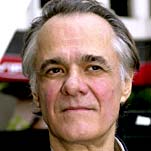
* Fernando Vallejo
Fernando Vallejo Rendón (born 1942 in Medellín, Colombia) is a biologist, filmmaker and writer, born in Colombia. He obtained Mexican nationality in 2007.
He was born and raised in Medellín, though he abandoned his hometown early in life. He started studies in Philosophy at the National University of Colombia in Bogotá, but after one year he abandoned the Faculty of Philosophy and Letters. Soon after he began new studies on iology at the Universidad Javeriana in Bogotá, which he finished. Then he spent one year in Italy at the film academy Cinecittá, where he obtained basic notions on cinema.
He then returned to Colombia with the project of filmmaking. Yet after difficulties with the Colombian Government in producing and, after he produced it, in presenting his first film (it was censored), he decided to leave his country.[citation needed]
In Mexico he produced and distributed three films about the violence in Colombia. He has been living in Mexico since 1971, where he not only produced his cinematographic pieces, but also the whole of his literary work. Despite time spent in other locales, mainly Europe and the United States, all of his novels take place in Colombia. Some of his themes are grammar, biology, philosophy, physics, violence, pederasty, adolescence, drugs, death and politics, mostly related to places such as Antioquia and Medellín; yet his main theme is his life. His books are written in first person, in an autobiographical style.
Vallejo is also a great lover of dogs and other animals. He has made public his desire that upon his death his wealth and royalties be used to rescue stray dogs from the streets of Colombia.
His most well-known novel, La virgen de los sicarios, has been translated into English as Our Lady of the Assassins. It deals with his fictionalized return to Medellín, and his relationships with two teenagers caught in the local cycle of violence. The autobiographical/fiction La virgen de los sicarios was made into a full feature film in 2000 and released in the U.S. as Our Lady of the Assassins.
In April 2007, Vallejo obtained Mexican citizenship and published a letter in which he publicly renounced his Colombian nationality. The letter presents the reasons for his decision by mentioning several incidents during his career, among them the recent reelection of president Uribe, that eventually led him to this decision.
==============================================================================

José María Vargas Vila
Uno de los personajes más polémicos de principios del siglo XX en América, José María Vargas Vila se caracterizó por sus ideales liberales radicales y la consecuente crítica contra el clero, las ideas conservadoras y la política imperialista de Estados Unidos. Muchas de sus ideas son próximas al existencialismo y se fueron afirmando como libertarias, muy próximas al anarquismo, a tal punto que él mismo se declarara anarquista. Sin embargo se caracterizó por defender toda causa y personaje que favoreciera la libertad y la justicia de los pueblos, especialmente los latinoamericanos; sin fijarse tanto en si compartían exactamente su misma forma de pensar a pesar de ser consciente de ello: mi pasión por la libertad ha devorado mi vida, escribió.
En su juventud alternó el oficio de maestro en Ibagué, Guasca, Anolaima y Bogotá, con su participación en las guerras civiles como soldado de las tropas liberales radicales de Santos Acosta y Daniel Hernández. Tras la derrota liberal en 1885, se refugió en Los Llanos y luego marchó al exilio a Venezuela. Por su actitud crítica el Presidente de Colombia Rafael Núñez puso precio a su cabeza. En 1887, en Caracas, fundó y dirigió la revista Eco Andino y en 1888, con Diógenes Arrieta y Juan de Dios Uribe, fundó la revista Los Refractarios.
Conminado por el gobierno de Raimundo Andueza Palacio a dejar Venezuela, viajó a Nueva York en 1891y trabajó en la redacción del periódico El Progreso. En esta ciudad trabó amistad con el escritor e independentista cubano José Martí. Luego fundó la Revista Ilustrada Hispano América, en la que publicó varios cuentos. En 1898 fue nombrado por Eloy Alfaro, como ministro plenipotenciario de Ecuador en Roma y es recordada su negativa de arrodillarse ante el papa León XIII: "no doblo la rodilla ante ningún mortal" . A causa de su novela Ibis, publicada en 1900, fue excomulgado por el Vaticano y recibió la noticia con regocijo.
En 1902 fundó en Nueva York la revista Némesis, desde la cual se criticaba al gobierno colombiano de Rafael Reyes y a otras dictaduras latinoamericanas, así como a las imposiciones del gobierno estadounidense, como la usurpación del canal de Panamá, la Enmienda Platt. En 1903 publicó en esa revista Ante los Bárbaros tras lo cual el gobierno de Washington lo obligó a dejar Estados Unidos.
En 1904 gobierno de José Santos Zelaya designó a Vargas Vila como representante diplomático en España, junto con Rubén Darío. Los dos fueron integrantes de la Comisión de Límites con Honduras ante el rey de España, quien era entonces mediador en el contencioso. Pero esto fue por poco tiempo pues el colombiano pronto regresó a la edición de sus libros y luego de breves estancias en París y Madrid se asentó en Barcelona, donde inició, por acuerdo con la Editorial Sopena, la publicación de sus obras completas. Rubén Darío le dedicó un par de poemas: "Cleopompo y Heliodemo" y "Propósito primaveral". Durante su estancia en España realizó varias giras por varios países de América latina, donde alcanzó gran popularidad.
=================================================================
Max Vergara Poeti
Max Vergara Poeti (in full Massimo Christian Vergara Poeti-Marentini) (born March 4, 1983) is a Colombian-Italian author, essayist and translator. He writes in Spanish and English. He is also a painter. Considered the best voice of his generation of writers, his first collection of short stories appeared when he was 17, in one volume titled El mar, which was followed by a collection of poetry, Las Flores Áureas, that has appeared recently in a small press printing in South America.
He has written under his name and nicknames for important newspapers in Europe and Latin America, such as El Tiempo, Clarín (newspaper) and Corriere della Sera, plus in monthly magazines such as Margen, Crónica and The Atlantic Monthly. Vergara Poeti lives in Bogotá and writes articles for Libro de Notas and Adentro y Afuera, a writing project. He has announced his next novel, to be published in Europe and Latin America.
=============================================================
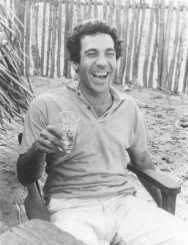
Álvaro Cepeda Samudio
Escritor, periodista, cuentista y novelista costeño, nacido en Ciénaga, Magdalena, el 30 de marzo de 1923 y fallecido en Nueva York el 12 de octubre de 1972. Realizó sus estudios de secundaria en el colegio Americano de Barranquilla y en 1949 viajó a los Estados Unidos a estudiar periodismo en la Universidad de Columbia, en Nueva York. En 1951 regresó a Barranquilla y trabajó como corresponsal de The Sporting News. En 1955 se casó con Teresita Manotas, en 1951 tuvo una columna en la página editorial de El Heraldo, titulada la "Brújula de la cultura", y fue director del Diario El Caribe. Participó como guionista y actor en el cortometraje La Langosta Azul, al igual que en otras películas cortas y en un noticiero de cine, y organiz&oacutE; el cine Club de Barranquilla.
Hablar de Cepeda periodista equivale a hablar de él como intelectual y artista. Quería estar al tanto de todo y lo quería dar a conocer a todos. Precozmente había visto la necesidad de buscar, acoger y aclimatar valores nuevos y universales, tanto en las formas como en los temas, y de ello da fe su narrativa de ficción de esa primera &eacue;poca. Para Cepeda, en materia de arte y cultura, lo primordial era que circulara la información libremente.
En la producción de la primera etapa periodística de Cepeda, se advierte como va definiendo los rasgos de los que sería su periodismo. Sus dos primeros textos conocidos son: Una Calle, descripci&oacutE;n-relato y El periodismo como función educacional, ensayo-polémica-manifiesto, aparecidos en El Nacional de Barranquilla. Su primera columna publicada en El Nacional fue la titulada En el márgen de la ruta.
Cepeda Samudio perteneció al Grupo de Barranquilla, tertulia de intelectuales de la que formaban parte Gabriel García Márquez, Alfonso Fuenmayor, Germán Vargas, Ramón Vynes y José Félix Fuenmayor, entre otros; y publicó varios cuentos en la revista del grupo llamada Crónica.
=======================================================
Eduardo Caballero Calderon was a colombian journalist and writer. He was born in (b Bogota March 6 1910 - d April 3 1993). As journalist, he worked to the main Colombian newspapers, such as El Tiempo and El Espectador. Also he was ambassador from Colombia to Peru, Argentina, Spain and France. Caballero was elected as congressman two times for the department of Boyaca and was major of Tipacoque.
His most known books are El Cristo de espaldas (Backwards Christ)(1952), Siervo sin tierra (Landless servant) (1954), La penultima hora (The hour before the last)(1955), and Manuel Pacho (1962), which are mainly depictions of events related with the bipartisan violence in Colombia (La Violencia). Other works are Cain (1969), El buen salvaje (The good savage) (1963), book that won the Nadal Prize in 1965 and Historia de dos Hermanos (Two brothers history) (1977) among others.
Although Caballero is one of the most recognized Colombian writers, his writing is mainly focused in the essay style, as showed in the next fragment extracted from his short story "Tale of little princess Isabel" written for the teaching of history to children:
===================================================================
German Arciniegas (Born December 6, 1900 in Bogota, died November 29, 1999) was a Colombian essayist and historian. Arciniegas wrote over 50 books and many columns in the Colombian newspaper El Tiempo and also taught at Columbia University in New York.
Books
* El estudiante de la mesa redonda, Madrid: Juan Pueyo, 1932. 248 pp. (the student of the round table)
* "America tierra firme", Sociologia. Santiago de Chile: Ercilla, 1937. 235 pp. (America firm land)
* "Los Comuneros, Bogota: Editorial ABC, 1938. 402 pp. (the commoners)
* "Biografia del Caribe",Buenos Aires: Editorial Sudamericana, 1945. 531 pp. (Biography of the Caribbean)
* "Entre la libertad y el miedo", Mexico: Editorial Cultura (Cuadernos Americanos), 1952. 362 pp. (Between Freedom and being afraid)
* "America magica - Los hombres y los meses", Buenos Aires: Editorial Sudamericana, 1959. 317 pp. (magic America - men and months)
* "America magica - Las mujeres y las horas", Buenos Aires: Editorial Sudamericana, 1961. 253 pp. (magic America - women and hours)
* "El mundo de la bella Simonetta, Buenos Aires: Editorial Sudamericana, 1962. 185 pp. (The world of beauty Simonetta)
* "El continente de los siete colores. Historia de la cultura en America Latina, Buenos Aires: (The seven colors' continent) Editorial Sudamericana, 1965. 715 pp.
* "Nueva imagen del Caribe", Buenos Aires: Editorial Sudamericana, 1970. 457 pp. (new image of the Caribbean)
* "Roma secretisima", Madrid: Anaya, 1972. 194 pp (Very secret Roma)
* "Bolivar, el hombre de la gloria, Bogota: Ediciones Tercer Mundo, 1983. 142 pp. (Bolivar, the man of the glory)
=========================================================
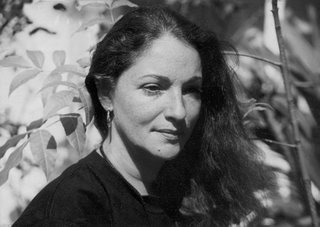
Amparo Osorio (Bogotá). Poeta, narradora, ensayista y periodista colombiana. Ha publicado los libros: Huracanes de sueños (1983-1984), Gota ebria (1987), Territorio de máscaras (1990), la antología La casa leída (1996), Migración de la ceniza (1998), Omar Rayo Geometría iluminada (entrevista, 2001), Antología esencial (2001), Memoria absuelta (2004).
Es editora general de la revista Común Presencia, y codirectora de la colección Internacional de literatura Los Conjurados, en la que han aparecido cuarenta títulos en los géneros de poesía, cuento, ensayo y testimonio (donde son de gran importancia las versiones en español de los Discursos de los Premios Nobel de Literatura, compiladas en tres tomos). Varios de sus poemas han sido traducidos al inglés, francés, árabe, italiano, portugués, húngaro, alemán, rumano, ruso y sueco. En la actualidad preside la Fundación Literaria Común Presencia, entidad dedicada a la investigación, recopilación y difusión cultural. Obtuvo la primera Mención del concurso Plural de México (1989) y la beca nacional de poesía del Ministerio de Cultura (1994). Ha representado a Colombia en varios encuentros internacionales de literatura en diversos países (Argentina, Venezuela, Brasil, Perú, Ecuador, Italia, Bélgica, Puerto Rico, México y Estados Unidos...) Sobre su obra han escrito comentarios críticos diversos escritores de importancia internacional como Jorge Rodríguez Padrón., Fernand Verhesen y Claude Miche Cluny. Tiene en preparación un libro de entrevistas a grandes creadores universales.
Obras
* Gota ebria (Ediciones Embalaje, Roldanillo, 1987)
* Territorio de máscaras (Hojas Sueltas Editores, Bogotá, 1990)
* Migración de la ceniza (Editorial Magisterio, Bogotá 1998)
* Antología esencial (Colección Los Conjurados, Bogotá, 2001)
* Memoria absuelta (Universidad Nacional de Colombia, 2004)
==========================================================

Antonio Maria Flores
Poeta colombiano de origen español, nacido en Don Benito, España, en 1959.
Obtuvo el título de Médico Cirujano por la Universidad de Caldas y el Doctorado en Fisiología por la Universidad Complutense de Madrid.
Forma parte del prolífico Grupo Caldense que tanto está aportando a la literatura colombiana contemporánea.
Fue miembro del Consejo Departamental de Cultura y del Fondo Mixto de Promoción de Cultura de Caldas. Director de publicaciones del Fondo Editorial del Ayuntamiento de Don Benito, España, y miembro del Comité de Selección del Programa Crea de Colcultura en Colombia.
Es además fundador de la revista Aurocarbónica y columnista de la Agencia Enlace del Ministerio de Comunicaciones de Colombia.
Premiado y publicado en España, Argentina, Colombia y Brasil, algunos de sus textos han sido traducidos al inglés, francés, portugués, danés y catalán.
De su obra se destacan «Poemillas de amor antiecológicos» 1993, «El círculo cuadrado» 1987, «La ciudad» 2001 y «Desplazados del paraíso» Premio Internacional de Poesía Ciudad de Bogotá 2003.
====================================================================

Daniel Samper Pizano (born in Bogota in 1945) is a Colombian lawyer, journalist, story-teller, columnist and novelist. He is also known for being brother of former President of Colombia, Ernesto Samper.
Samper studied in the Gimnasio Moderno where he began writing in the alumni newspaper "El Aguilucho" (The Sparrowhawk). At the age of 19 he worked for the Colombian newspaper El Tiempo as a reporter. After graduating from high school, Samper studied law in the Pontifical Xavierian University and later attended graduate school for journalism at Kansas University, United States. He was also awarded the Nieman Fellowship by Harvard University.
Since then he has been an editor, columnist and author of some 25 books, TV and movie screenwriter and winner of numerous recognitions and awards in Colombia, Spain and other part of the Americas. Among these, the "Maria Moors Cabot prize" given by Columbia University. He has won three times the Colombian "Simon Bolivar prize for Journalism", the "Premio Rey de Espana" (King of Spain prize).
In Colombia, Samper is also considered the father of Colombian investigative journalism after his work as a reporter for El Tiempo newspaper.
Samper resided in Madrid since 1986 and was an editor of the Spanish magazine Cambio 16. He is also member of the Colombian Language Academy.
He's writings are notable for having a wide and soft sense of humor mixed with some social criticism. He writes a column for El Tiempo called "Cambalache" (Col.oquialims meaning "Exchange") and the magazine Revista Carrusel with a humor section called "Postre de notas" (notes dessert) with some articles written for the Colombian magazines like El Malpensante, Revista Semana and Gatopardo.
As a TV screenwriter he wrote scripts for the Colombian TV series "Dejemonos de vainas" during the 1980s and 1990s.
His last book was released in December, 2006 titled " Viagra, Chats y otras pendejadas del siglo XXI" (Viagra, Chats and other stupidity of the 21st Century), a compilation of 62 short stories.
Work
* A mi que me esculquen 1980
* Dejemonos de vainas 1981 (TV series)
* Llevate esos payasos 1983
* Piedad con este pobre huerfano 1985
* Esto no es vida 1989 (This is no life)
* Les Luthiers de la L a la S 1991 (Les Luthiers from L to S)
* No es porque sea mi hijo 1992 (Is not because is my son)
* Lecciones de histeria de Colombia 1994 (Lessons of Colombian Hysteria)
* Nuevas lecciones de histeria de Colombia 1994 (New lessons of Colombian Hysteria)
* Cantando bajo la ducha -Quince lecciones para alcanzar el sueno de ser musico- 1995 (Singing in the shower -Fifteen lessons to achieve the dream of becoming a musician- ) -featuring Jorge Maronna-
* Confesiones de un espermatozoide (El sexo puesto) (Spermatozoid Confessions (the opposite sex)) 1997 -featuring Jorge Maronna-
* 10 relatos historicos 1999 (10 Historical Stories) - featuring Joaquin Leguina, Angeles de Irisarri, Emilio Ruiz Barrachina and others-
* De tripas corazon (El tonto emocional) 1999 - featuring Jorge Maronna- (the emmotional silly)
* Aspectos sicologicos del calzoncillo y otros articulos de humor 2000 (Underwear Psychological aspects and other articles related to humor)
* Si Eva hubiera sido Adan 2000 (If Eva had been Adam)
* Antologia de grandes reportajes colombianos 2001 (Anthology of Great Colombian reports)
* Antologia de grandes entrevistas colombianas 2002 (anthology of Great Colombian interviews)
* Del adulterio considerado como una de las bellas artes 2002 (Of Adultery condered as a Fine Art)
* Antologia de grandes cronicas colombianas 2003 (anthology of great Colombian chronicles)
* El discreto encanto del liguero y otros motivos para sonreir 2003 (
* Impavido coloso 2003 (colosal impavidus)
* Versos chuecos 2005 (crooked verses)
* Viagra, Chats y otras pendejadas del siglo XXI 2006
====================================================================
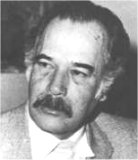
Manuel Mejia Vallejo, (1923 - 1998) was a Colombian writer and journalist. The specialist Luis Carlos Molina says that Mejia represents the Andean aspect of the contemporary Colombian narrative, characterized by a world of symbols which are little by little being lost in the memory of the mountain.
Doctor Honoris Causa of the National University of Colombia. Professor of literature at the National University of Colombia at Medellin, director of the Departmental Printing Press of Antioquia.
Born in Jerico, he studied at the Bolivarian Pontifical University and studied painting and sculpture at the Fine Arts Institute of Medellin. He collaborated as a journalist in the newspaper El Sol. He was the creator of Grupo La Tertulia with Gonzalo Restrepo Jaramillo and Jaime Sanin.
Between 1949 and 1957 he was exiled in Venezuela, Guatemala, Honduras, and El Salvador. In 1978 he was named Director of the Writer's Workshop of the Pilot Public Library of Medellin. Vallejo died in El Retiro.
Works
Novels
* La Tierra eramos nosotros (1945), written at the age of 20, published at the request of Grupo Panidas, coordinated by Leon de Greiff
* Al pie de la ciudad (1958)
* El dia senalado (1964), Premio Nadal
* Aire de Tango (1973)
* Las muertes ajenas (1979), Special mention in the Premio Casa de las Americas
* Tarde de verano (1981)
* Y el mundo sigue andando (1984)
* La sombra de tu paso (1987)
* La casa de las dos palmas (1988), Premio Romulo Gallegos, Shown on Colombian television.
* Los abuelos de la cara blanca (1991)
Short Stories
* Tiempo de sequia (1957)
* Cielo cerrado (1963)
* Cuentos de zona torrida (1967)
* Las noches de las vigilias (1975)
* Otras historias de Balandu (1990)
* Sombras contra el muro (1993)
* La venganza y otros relatos (1995), Classic Colombian short story.
* La muerte de Pedro Canales.
* Rina de cuatro gallos.
* Que despierten sus suenos.
* El hombre vegetal.
* Aqui yace alguien.
* El milagro.
* Los julianes.
* La guitarra.
* El cielo cerrado.
* Miedo.
* Una canoa bajo el Orinoco.
* Palo caido.
* El sitio del agua.
Books of Poems
* Practicas para el olvido (1977).
* El viento lo dijo (1981)
* Memoria del olvido (1990)
* Soledumbres (1990)




 Bonus View
Bonus View



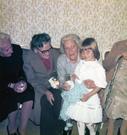






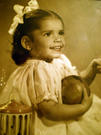



No comments:
Post a Comment